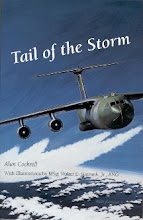The delays due to minor problems and complications took a quick toll on us up front, and made the passengers cranky. When Tim, my F/O, tried unsuccessfully to clear a status message about low oil in the left generator drive, I called out a mechanic. He punched the very same buttons we did and could ply no magic on them. He called maintenance central for advice.
The word came back: ignore it. It was only a “status” message and required no maintenance action at that time. I requested the mechanic go down and check the oil level in the drive. He said maintenance central said that was not necessary. That's when yours truly made his big mistake for the night. I shrugged it off and said, “Let's go!”
Tim pushed up the throttles and the 767's N1 blades buzzed. We heaved ahead down Lima's long runway. We were heavy and the roll was long. I worked hard focusing tired eyes on the engine instruments. At 100 knots I made the mandatory call-out: “100 knots.” From then till rotation speed—155 knots—we would abort only for engine failure, fire or predictive windshear warnings.
At 105 knots, I saw the Master Caution come on.
I glanced at the EICAS. The amber light read “L GEN DRIVE.” Concentrating on the takeoff, Tim didn't see it, and I didn't say anything. I wanted him to get us in the air, not do something impulsive like initiate a high speed reject.
After we were safely up and the gear was up, I said, “My friend, we have a problem.” He saw the light. His two-word utterance was a commonly heard homily to the god of excrement.
I got out the checklist, knowing what it required. A big warning note read,
I hovered my finger over the drive disconnect button and looked at Tim for confirmation. He nodded and confirmed. I pushed it. The plane lurched and the cockpit lights flickered as the left engine generator shut down. The right generator picked up the load. I started the APU and let its generator share the load. We would now burn the APU for the next seven hours from Peru to the USA.
If the APU generator had not come on line we would have had to dump some 60,000 pounds of fuel into the Pacific and return to Lima. Too risky to take that kind of a trip, across thousands of miles of water and Latin America, where emergency airfields are few and poor.
With the jet pointed toward home I leaned back and thought about all the people back there trying to get some shut-eye. They had no inkling that if the light had come on five seconds sooner they would have been treated with the terror of being thrown forward against their belts and lashed with the roar of the big Pratts blasting against the reverser doors. They would have deplaned and drifted back to their homes and hotels, scared and pissed.
And me? I Let fatigue and get-home-itis influence my decision not to call maintenance's bluff. I won't do it again.



















